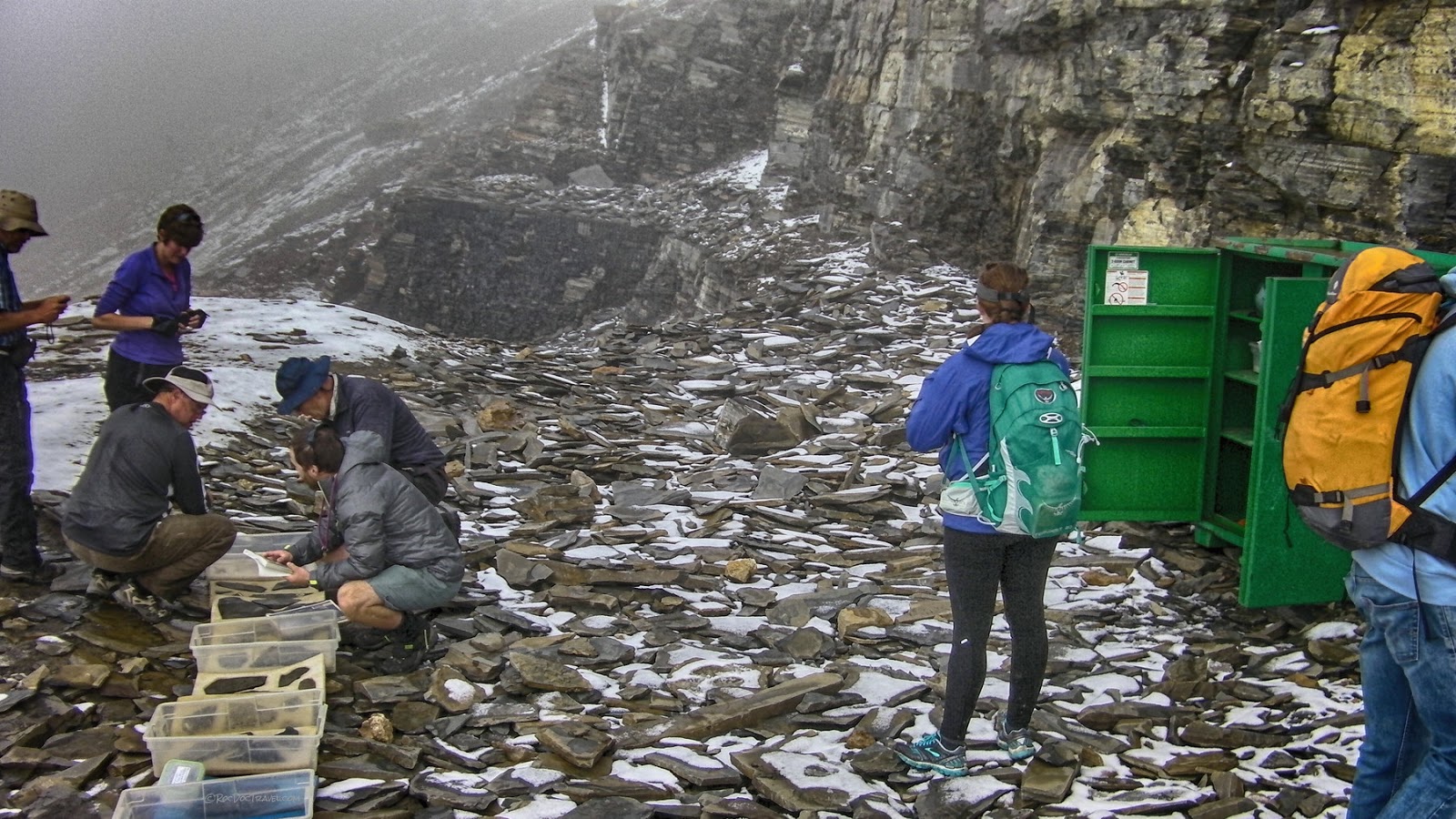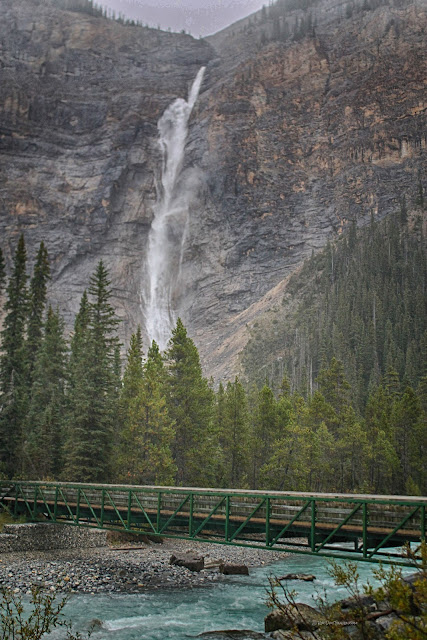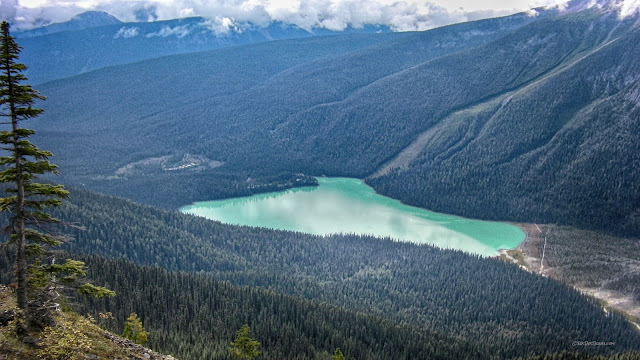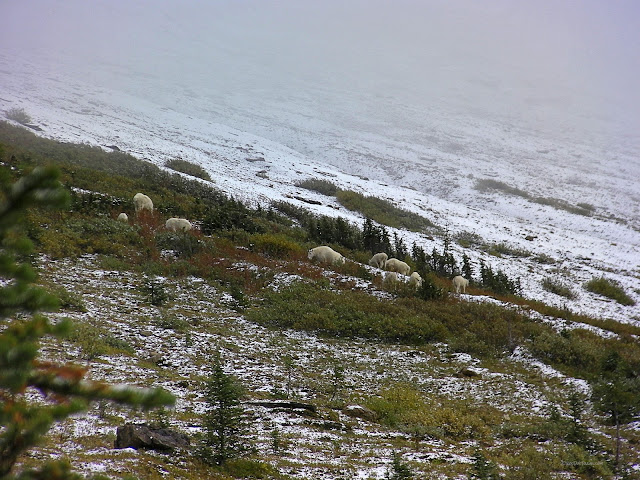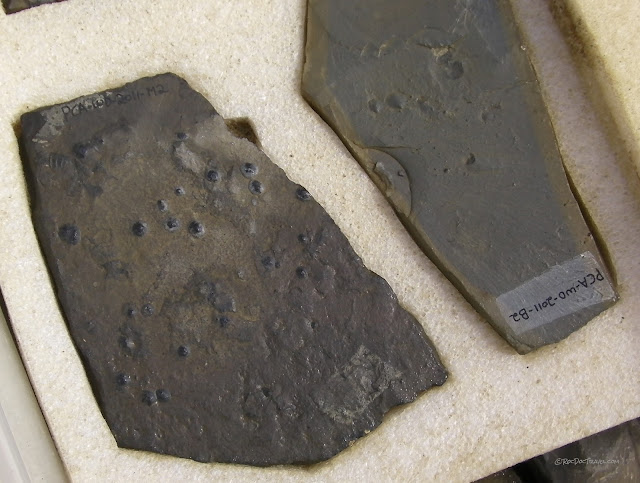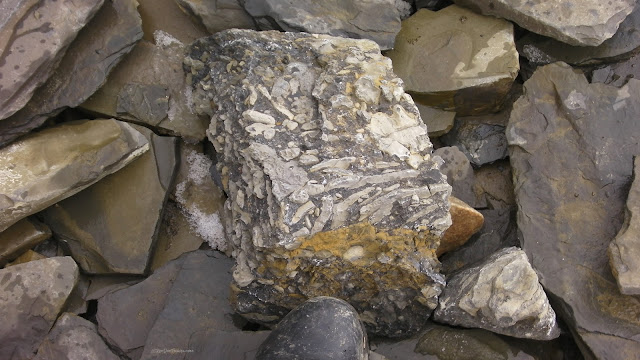Burgess Shale, B.C.
Burgess Shale, Yoho National Park, British Columbia
Visit the world's most important fossil quarry!The Walcott Quarry in the Burgess Shale has phenomenally well-preserved fossils from the critical time in Earth's history when life forms were exploding in abundance and diversity. As such, it is a truly unique and invaluable natural resource, and is protected as a World Heritage Site. It can only be visited with a licensed guide.
Visiting the quarry involves a strenuous hike of 13 miles (21 km) round-trip and a 2700 vertical foot (825 m) climb. It takes about 11 hours.
Travel to Yoho National Park
Lodging: Motels are available not far to the west in Golden. Field has a few lodges that accommodate small numbers. More lodging is available in and near Banff, and some of that is quite affordable. If you're doing the guided hike, you'll want to stay as near as possible to Field because you'll meet at 7 a.m. to start the hike.Guided Hike: Click here for full information. Cost was $126 CAD per person at the time of this writing. Sign up months in advance to get one of the very limited spots! You'll have to provide your own food and drink for the day.
Transportation: RVs are restricted in very few places in the parks, but that does include the road to Takakkaw Falls where this hike begins. There's a tight, steep switchback an RV or trailer just will not make.
Weather: I took the photos here on about September 1st, and as you'll see it snowed on us and we were soaked by the end. Be prepared for weather extremes at these elevations and latitudes. It's still worth the hike in anything but severe storms; I would do it again in a heartbeat! Take rain gear.
Considerations: Food and accommodations are far apart in most of the national parks (Banff, Jasper, and Yoho), so plan ahead and seriously consider bringing a cooler with food and drink.
The guided hike to the Walcott Quarry begins at the parking lot to Takakkaw Falls, quite a scenic spot to begin and end your day!
Geology of the Burgess Shale
The Burgess Shale Foundation's website gives an excellent summary here, but I'll try to condense it a bit.This fossil quarry is important first because it covers the early Cambrian "explosion" of life on Earth (about 510 to 505 million years ago) in which complex life forms first developed. Second, it's important because even delicate soft parts of the critters are preserved, giving us an unequaled look at early life on Earth. And third, the quarry includes plants and animals from all of the major phylla (groups) of today, plus some that no longer exist. Virtually all life forms on Earth today have ancestors in the Burgess Shale!
This spot in the Burgess Shale is unique geographically because it was located near the base of a high scarp formed by calcium carbonate deposits (a kind of reef) from simple life forms like algae. Occasional underwater landslides and mudflows would come off the scarp and deposit the mud and animals on the seafloor where the quarry is, preserving the animals' remains in great detail. The reef later protected this spot somewhat from the intense mountain-building deformation that formed the Canadian Rockies, saving the fossils from being deformed, fractured, or destroyed.
The life forms found in the shale are summarized here.
The forest in the valley near Takakaw Falls is gorgeous!
After a short section of steep switchbacks, the trail follows a topographic shelf for a while and goes by lovely Yoho Lake. There are back-country camp sites and an outhouse here.
A mile or two after Yoho Lake, the trail swings westward to take you to the west side of the mountain, and you encounter this sign. The closed area is farther; this is just a warning.
The trail is a steady upward course. I had a hard time watching the trail because there was so much jaw-dropping scenery! But I did notice the sedimentary structures and fossils in the limestone under my feet. This is Paleozoic continental shelf, now sitting high in the Rockies.
You'll get fabulous views of Emerald Lake. The entire landscape in Banff and Yoho National Parks was shaped by glaciation during several ice ages, the latest of which ended about 12,000 years ago. Emerald Lake sits in a valley shaped by glaciers.
While I was hiking, my lovely wife took this amazing picture at Emerald Lake. Wow!
The snow only stayed on the ground for an hour or so. The trail cuts diagonally up to the south toward the Walcott Quarry. The restricted area is in this view.
Looking back to the north, you'll have views of Mount Michael and the President and Vice President peaks. They're all part of the Paleozoic continental shelf sequence of shale, siltstone, sandstone, and limestone.
You'll probably see some wildlife on the way, like these mountain goats. Bears, elk, deer, and wolves also live in the area.
The trail takes you higher and higher at a steady pace, except for the beginning and the end, which are both steep switchbacks.
This is the bare slope leading up to the quarry. If you look closely, you'll see some hikers on the trail for scale. This last section is steep!
Guides and scientists keep a vault stocked with equipment and specimens for study since digging or taking fossils is not permitted. Our guide from the Burgess Shale Institute was very knowledgeable and was able to answer all the questions thrown at him by this group of geologists. You'll get to see all the major fossils, already picked out for you (and that's a good thing, because most of the fossils are very small and hard for an amateur to recognize).
This one section of the mountain has some of the best preserved fossils in the world. Only a few other limited spots in the region have such preservation, but none as spectacular as the Walcott quarry. It's a true shale, fissile (easily split), laminated (very thinly bedded), and very fine-grained (made of clay).
One of the fossils that many will recognize, a trilobite. Even soft tissues like eyes and nervous system are preserved in some specimens!
A lot of the fossils, like these wiwaxia (?), just look like dots at first, but up close you can see that they were animals.
A group of speciments laid out for us to examine.
Another piece of ripped up mud clasts.
You can take your time and hunt fossils. It's one of those soothing activities like fishing or crocheting that captures your mind and shuts out all other worries.
This is a snow squall coming up the slope. The view is very steeply downward toward Emerald Lake.
The hike back is as spectacular - or maybe more so - than the hike up! This is looking northward to Mount Michael.
Bring the best camera equipment you can, because you'll really want it! I was glad to have a telephoto lens for this one. The thing about this hike is, you aren't just seeing the mountains and their dramatic weather from below, you're actually up in it, experiencing it with all your senses. There's nothing else like it.
As you cross the shale and limestone talus slopes, keep your eyes peeled for fossils! After getting familiar with them at the quarry, they'll be easier to spot.
Related Posts: Banff Part 1, Banff Part 2, Banff South, Frank Slide
